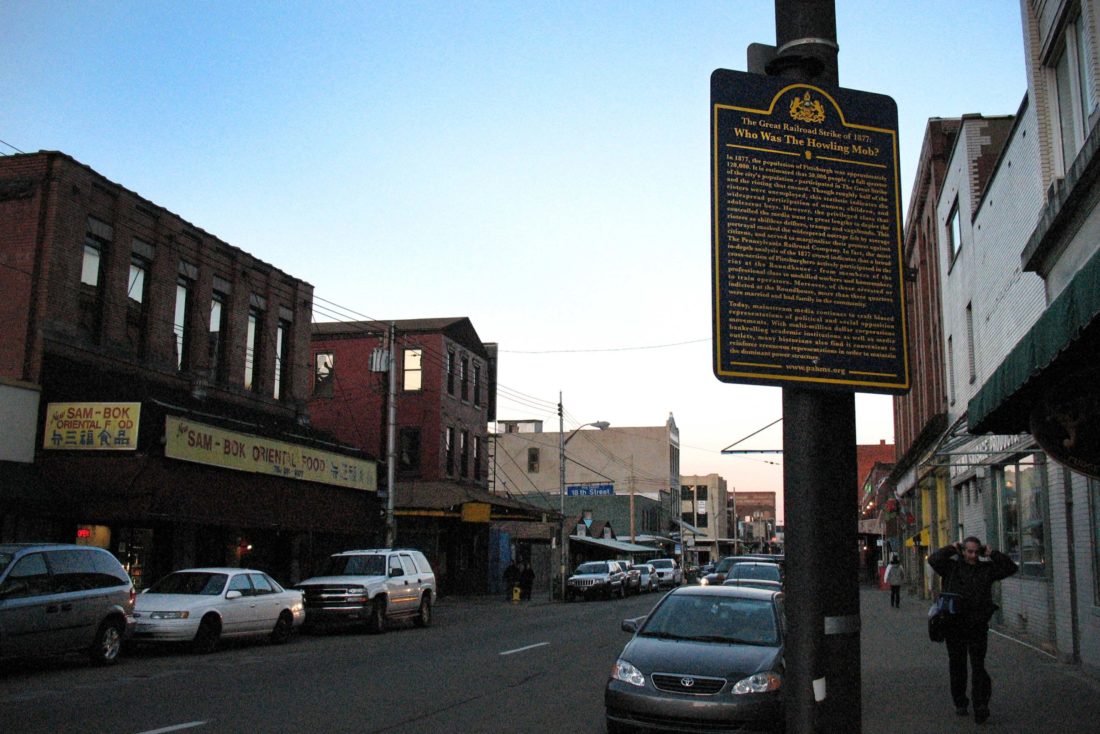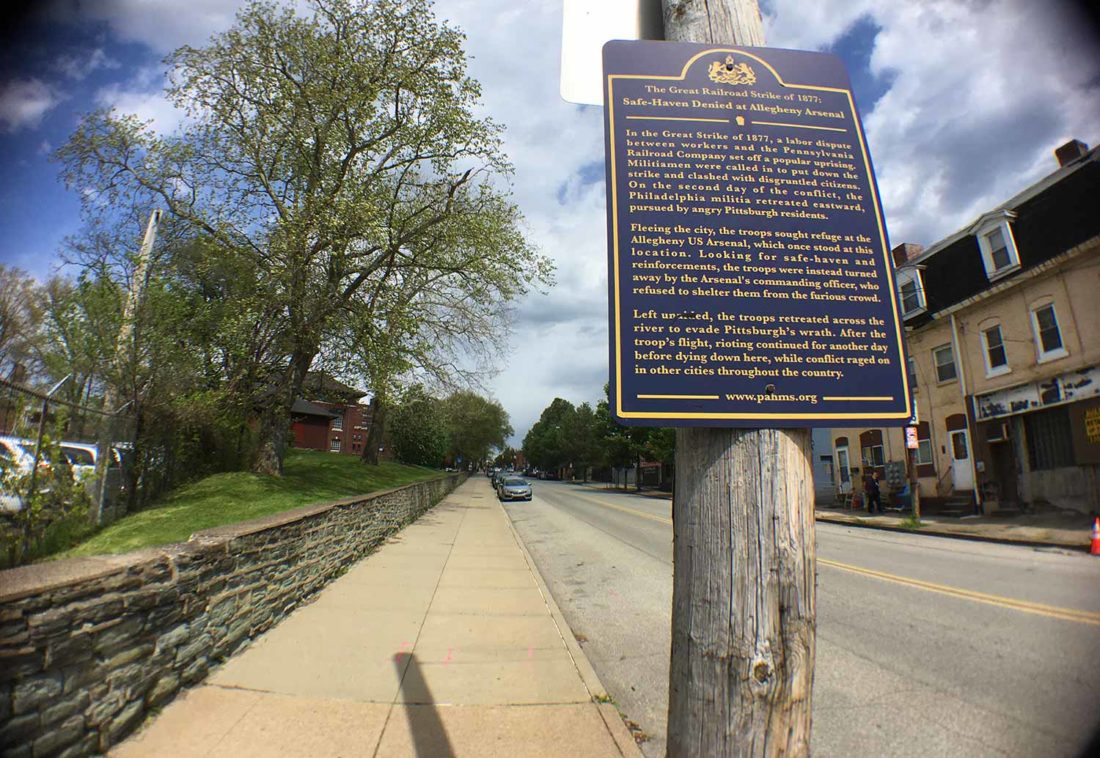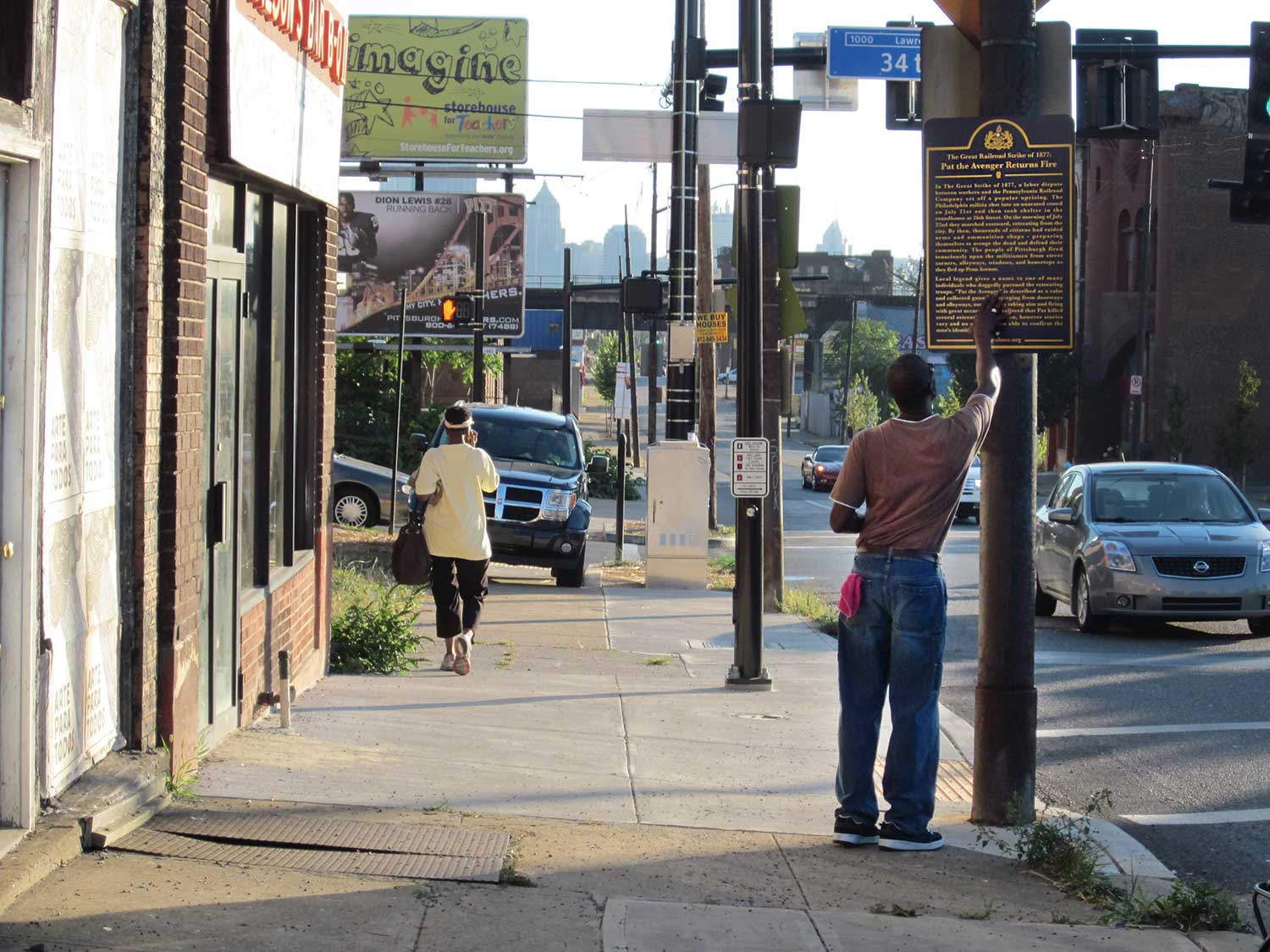Howling Mob Society
w/ anonymous collective
series of ten historical markers, website w/interactive map
2008
“The sixth and seventh days of the revolution, July 21 and 22, were the darkest and bloodiest of all. The city of Pittsburgh was completely controlled by a howling mob, whose deeds of violence were written in fire and blood.”
– Harper’s Weekly, August 11, 1877
I spent the majority of 2008 working with a then-anonymous collaborative team from variant backgrounds which eventually identified itself as the Howling Mob Society. We worked together to research, write, and fabricate a series of ten historical markers detailing the story of the Great Railroad Strike of 1877 as it unfolded in Pittsburgh, PA. The result is public, pedestrian-level signage which details the economic and social experiences that led to an incredible national uprising over 140 years ago. Our goal was to teach both the specific events of the summer of 1877 and the larger implications of a popular, working class rebellion combined with a general, cross-industrial strike. We installed our signage extra-legally on the streets of Pittsburgh, and as of November 2019, five of the ten signs are still part of the landscape of the city.
We created a website to document the project, where visitors can read the text on each sign, use an interactive map of our historical marker locations with additional pins to other 1877 event locations, and review our research bibliography.
In 2008, The Howling Mob Society received an Acknowledgment Award from the Pittsburgh Creativity Project at Carnegie Mellon University.
In 2012, our work was featured in the U.S. Pavilion at the 13th International Architecture Exhibition – la Biennale di Venezia, Italy.
The Howling Mob Society has been featured in several publications, including Gregory Sholette’s Dark Matter: Art and Politics in the Age of Enterprise Culture (Pluto Press, 2011) and a feature by Nicolas Lampert (author of A People’s Art History of the United States, The New Press, 2013) in Proximity magazine, issue #003 Fall/Winter 2008, which you can read here. In 2020, this project was featured as part of artist Dana Sperry’s The Why Here audio tour, including interviews with two Mob collaborators along with Richard Oestreicher, Eric Leif Davin, and Staughton Lynd. The entire marker series is listed in the Historical Marker Database online, which includes their mobile app.
“The Mob”, as we called ourselves, unofficially disbanded around 2010.
As of 2020, four of these original ten historical markers are still standing in public.





